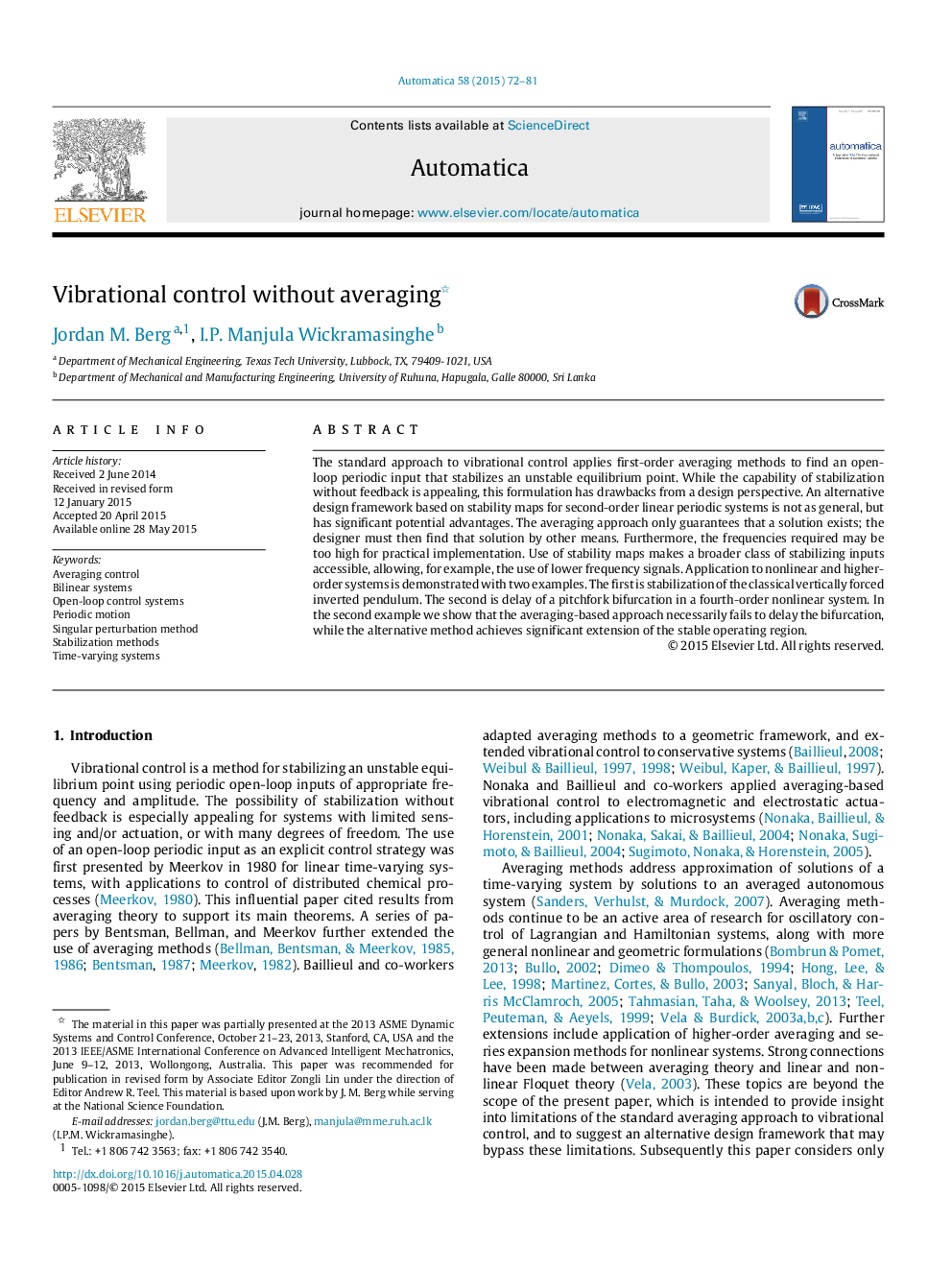| Article ID | Journal | Published Year | Pages | File Type |
|---|---|---|---|---|
| 695373 | Automatica | 2015 | 10 Pages |
The standard approach to vibrational control applies first-order averaging methods to find an open-loop periodic input that stabilizes an unstable equilibrium point. While the capability of stabilization without feedback is appealing, this formulation has drawbacks from a design perspective. An alternative design framework based on stability maps for second-order linear periodic systems is not as general, but has significant potential advantages. The averaging approach only guarantees that a solution exists; the designer must then find that solution by other means. Furthermore, the frequencies required may be too high for practical implementation. Use of stability maps makes a broader class of stabilizing inputs accessible, allowing, for example, the use of lower frequency signals. Application to nonlinear and higher-order systems is demonstrated with two examples. The first is stabilization of the classical vertically forced inverted pendulum. The second is delay of a pitchfork bifurcation in a fourth-order nonlinear system. In the second example we show that the averaging-based approach necessarily fails to delay the bifurcation, while the alternative method achieves significant extension of the stable operating region.
